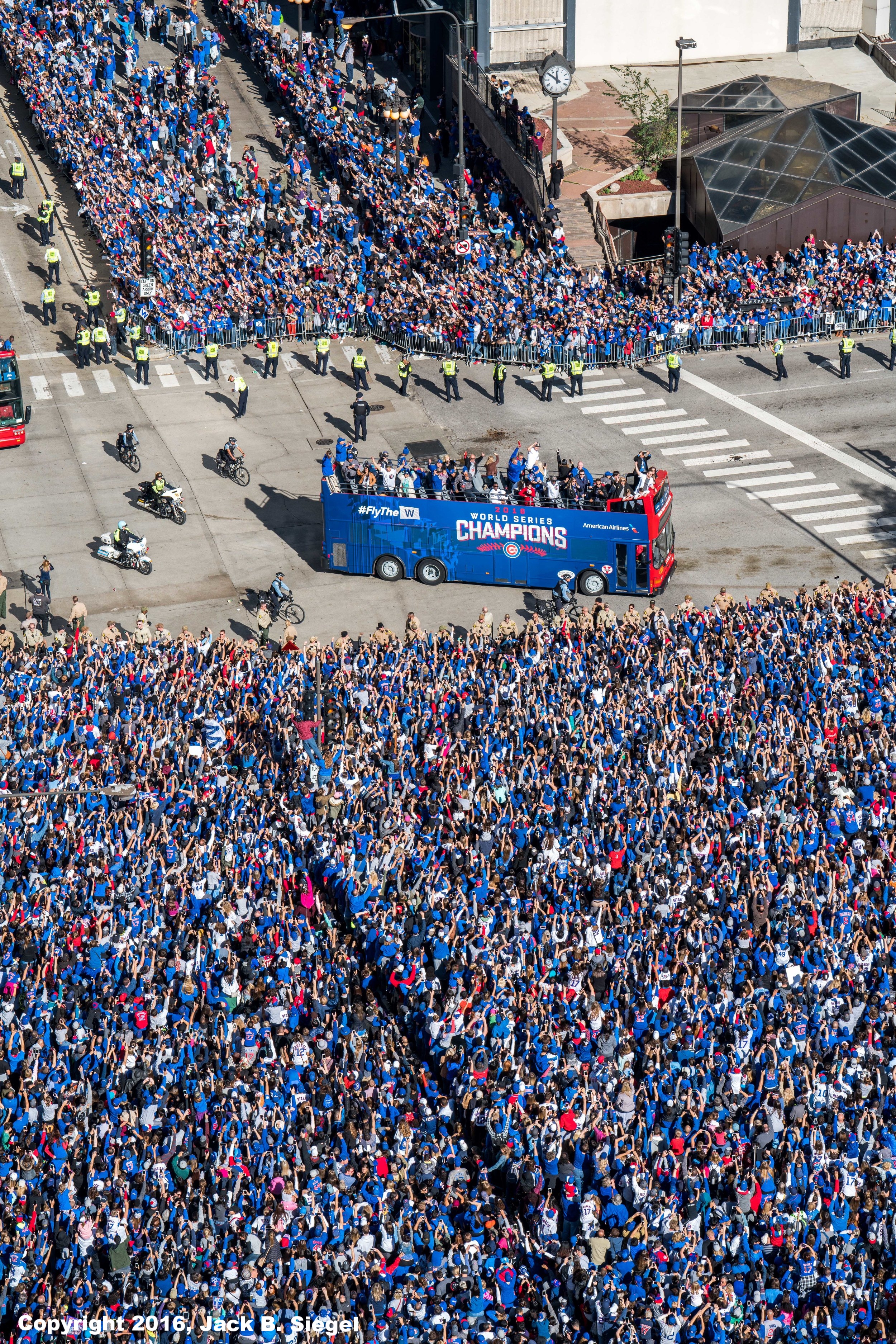108
Pick your poison, so to speak. I decided early on that I wanted the image depicted in the cover photograph, but that presents a problem. A photographer's worst nightmare is being relegated to a fixed position. I always say that when photographing in a club or concert hall. By picking this location, I did not have the opportunity to photograph the rally in Grant Park, the parade stepping off at Wrigley Field, or the chaos at the AMTRAK station. Only a media outlet like the Chicago Tribune has the number of photographers to cover all the bases, so to speak.
Obviously the event depicted in the parade that the City of Chicago threw for the Chicago Cubs after winning the World Series. I would have loved to have captured scenes up in Wrigleyville and down at the south end of Grant Park, where the ceremony was staged, but with an estimated 5,000,000 people lining the parade route, choices had to be made. I knew that with the size of the crowd, I was not going to get meaningful player and politician portraits, so better to go for dramatic. Capture the size of the crowd. Unfortunately, a photograph can't capture volume. As the Cubs turned the corner, the roar of the crowd was deafening. I was perched on the 17th floor of Michigan Boulevard Building, which was first occupied in 1914, looking north on Michigan Avenue.
For the most part, the mammoth crowd was orderly. The Chicago Police Department warned that there would be no tolerance for alcoholic consumption on the public streets, which may explain why I so often caught the odor of burning rope, so to speak. I did see plenty of beer bottles and cans, but only one "arrest," which consisted of one female cop tapping a participant on the shoulder, ordering him to toss the can in a trash bag that the cop was carrying, and then walking away.
When I descended from my 17th floor outlook into the crowd, I was stunned by the number of people. Michigan Avenue was overflowing. I used the Art Institute as a staging place to change lens and SD cards, but the guards ordered photographers off the steps. It was a real battle. One guy asked me to photograph him in front of the famed lions at the entrance, but I declined. "Not today," I said, "The guards are vicious. It is every photographer for himself."
I love covering demonstrations, but this is not my type of event. I don't find people who have spend the last 48 hours in a bar interesting photographic subjects. As usual, my desire for clean backgrounds, no backpacks, and perfectly composed scenes was near to impossible in the chaos that ensued. Moreover, hold up your camera, and people immediately wanted a staged photograph, hoping it would end up on the frontage of the Tribune. I heard, "Who you with?" more than a few times.
Before heading home, I headed to the Billy Goat Tavern (founded 1934), which seemed like a fitting place to have lunch. I had to wait in line for about 25 minutes, but once inside I had a double cheeseburger, chips, and much to my surprise, a Coke rather than a Pepsi. Delicious. And then the star attraction of the day. Owner Sam Sianis brought out the goat for the fans. I am sure that probably was not Kosher under Department of Health guidelines, but nobody was going to complain and the Chicago Police would have smiled, like everyone else. No hard feelings toward the goat, as evidenced by all the selfies.
Controversy of the day: The Chicago Plumbers Union dyed the Chicago River blue without obtaining any sign offs from the appropriate environmental agencies. By late afternoon, the WBEZ had an interview with an environmental advocate complaining that Chicago treats the river like an object rather than as a natural resource. I am all for environment but once every 108 years doesn't seem like a big deal. Chill.















